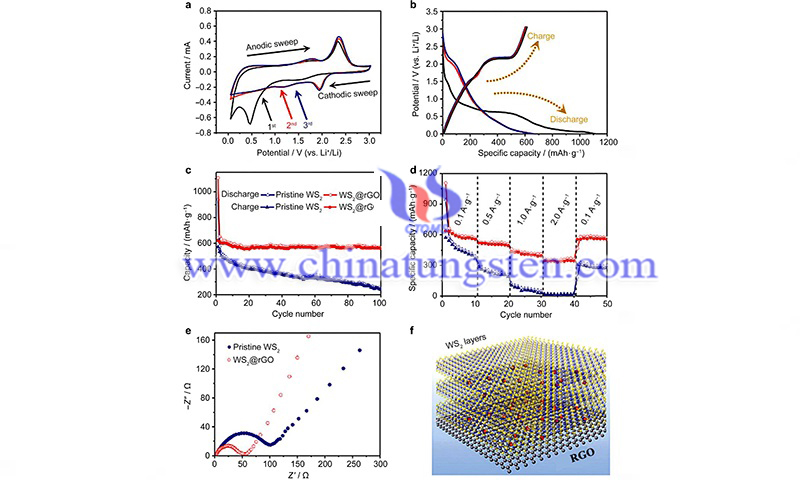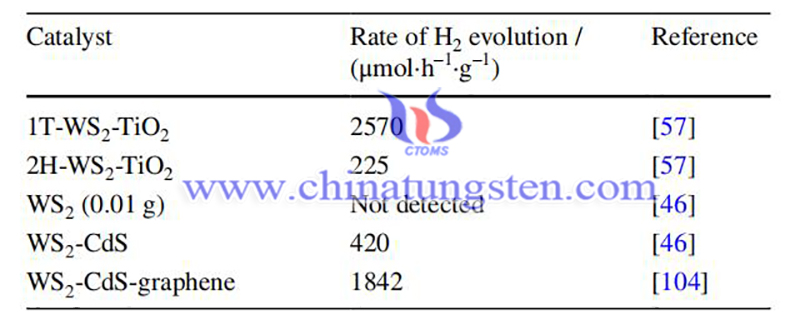IF-WS2 and NT-WS2 of WS2 Nanomaterials and Preparation
- Details
- Category: Tungsten Information
- Published on Saturday, 27 August 2022 21:29
Various forms of WS2 nanomaterials include nanosheets, IF-WS2, NT-WS2, and other forms. Chemical gas-solid reactions are the most well-known and established method for the synthesis of IF WS2 nanoparticles and nanotubes. Tenne et al. initially synthesized IF WS2 nanoparticles and nanotubes using WO3 films and H2S in a reducing atmosphere (95% N2 + 5% H2) at 850 °C. However, only a small amount of products could be synthesized by this method.
Feldman et al. replaced the WO3 films with commercial WO3 powder and made some improvements to the reactor, synthesizing considerable quantities (50 mg at a time). in 2000, they designed a fluidized bed reactor with the same reaction material to achieve continuous preparation of IF WS2 nanoparticles and nanotubes.

In order to control the structure of IF WS2 nanoparticles and nanotubes by changing the process parameters during the synthesis, Margolin et al. synthesized IF-WS2 nanoparticles and NT-WS2 by gas-solid reaction and then investigated their growth mechanisms.
H2S is known to be highly toxic, corrosive, flammable, and explosive, so Wiesel et al. synthesized IF-WS2 using nanopowder of the corresponding metal oxides, sulfur as a solid precursor, and NaBH4 or LiAlH4 as a hydrogen-releasing agent. The products were obtained by conventional furnace heating to about 900 °C or by photothermal ablation of high-concentration white light at higher temperatures.
In addition, other methods have been used to prepare IF-WS2 or NT-WS2, such as thermal decomposition, templating, and chemical vapor phase transport. In addition to the above three (nanosheet, IF WS2, and NT WS2) morphologies, WS2 nanomaterials also have other morphological types such as nanospheres, nanowires, nanorods, and nanoflowers.
These special morphologies of WS2 also have potential applications due to their porous structure and increased specific surface area. By adjusting the reaction conditions, WS2 with different morphologies is usually considered to be prepared by the solvothermal method.

Researchers prepared low-dimensional WS2 (nanospheres, nanowires, and nanorods) using cetyltrimethylammonium bromide (CTAB) as a surfactant. The results showed that the concentration of CTAB has a great influence on the morphology of WS2. Many ordered microstructures show a nanometer range due to the phenomenon that the active agent molecules can aggregate in solution to form micelles, microemulsions, liquid crystals, and vesicles.
These ordered microstructures can provide a special microenvironment for chemical reactions. They can be used as microreactors or templates for the synthesis of various nanomaterials. Depending on the concentration of the aqueous solution, the surfactants exhibit different aggregated forms, leading to the subsequent formation of WS2 with different morphologies. In addition, three-dimensional nanoflower-like WS2 can also be synthesized by the solvothermal method.
Article Source: Sun, CB., Zhong, YW., Fu, WJ. et al. Tungsten disulfide nanomaterials for energy conversion and storage. Tungsten 2, 109–133 (2020).
- Tungsten Manufacturer & Supplier, Chinatungsten Online: www.chinatungsten.com
- Tungsten News & Prices of China Tungsten Industry Association: www.ctia.com.cn
- Molybdenum News & Price: news.molybdenum.com.cn
- Tel.: 86 592 5129696; Fax: 86 592 5129797; Email: sales@chinatungsten.com



 sales@chinatungsten.com
sales@chinatungsten.com